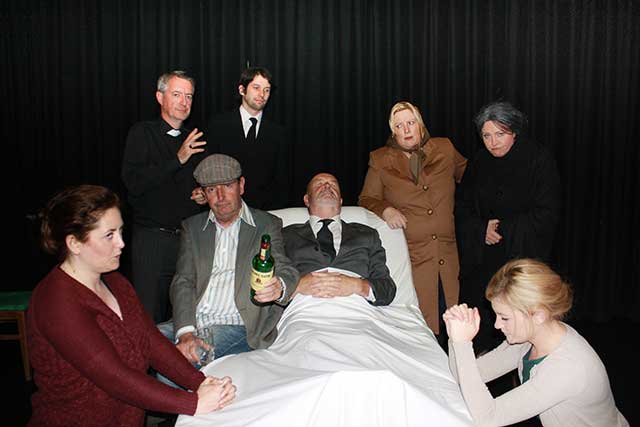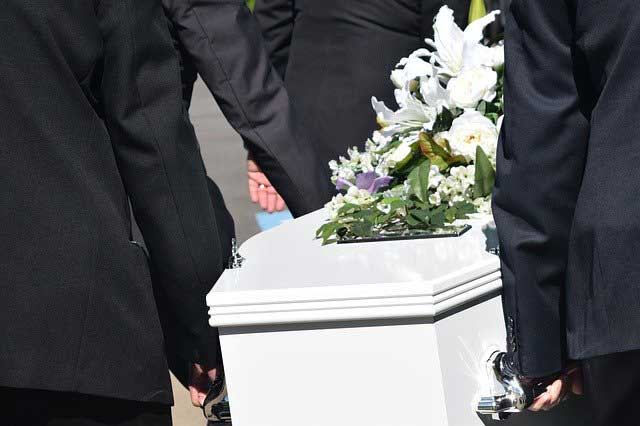The influence of our ancient ancestors is still very apparent in many Irish traditions; even in death their influence is still strong within our culture.
The Irish belief in the world of the supernatural still survives. Our respect and affinity for the workings and wonder of the natural world still deep rooted in our ancient and historic culture. Where there is life there is also death, Natures balance ruling over our short existence. As with joy there is sadness but also a constant reminder of wonderful and happy times in our lives with the people who have passed. In Ireland funerals are a solemn experience soaked in tradition.
Death is an unavoidable event, but even in the deepest depths of sorrow, death has a unique way of bonding and uniting people.
Here in Ireland we have very distinct ways of mourning our dead, but as we mourn we also celebrate life. Customs surrounding funerals in Ireland have been passed down through the generations of our people. Customs and traditions do vary in different parts of Ireland, however the core elements of our ancient belief systems are apparent for all to see.
What is an Irish wake?

An Irish wake is a part of an Irish funeral when loved ones get to honor their dead, to celebrate their life.
It is way for all to say goodbye and grieve in familiar surroundings, while still trying to remember happier times. In my opinion it is possible to say the Irish have a wonderful and unique gift, the ability to find a moment of happiness even in the depths of deepest sorrow.
What happens at Irish wake?
An Irish wake traditional takes place at the home of the deceased. The room of the wake where the deceased is laid out is specially prepared.
The windows must be left open so that the spirit can leave the home. In folklore it is said that the person that closes the window would be cursed. Candles are lit at the head and foot of the coffin.
The deceased is traditionally dressed in their best clothes, in the past they would have been wrapped in a shroud. This is a time when the deceased is visited by friends and family.
In Catholic families a rosary beds would be wrapped around the deceased hands.
In the house clocks are traditionally stopped at the time of death. Curtains are closed and mirrors covered. The occurrence and practice of waking the dead allows for a peaceful goodbye.
In the waking room prayers are said. Family usually holds a constant vigil staying with the deceased. Once the visitors leave the waking room they often share a drink and talk about times gone by.
Usually on an evening people the vigil service in the local church, the coffin is taken from the house of waking. It is usual for the coffin to be removed from the house feet first so that the dead cannot find their way back into the home.
The Men of the family or close male friend usually carry the coffin into the church. Prayers are said and the funeral takes place the next day followed by burial.
The family following the coffin to the grave and people gather around for the final goodbye, kind words are spoken and blessings are made and the rosary is said.
Be careful in the graveyard, it is bad luck to step on someone’s grave, and if you trip or fall in the graveyard it is considered extremely bad luck and according to some superstitions it could result in your death.
After the funeral it is usual for the family of the deceased to invite those gathered to a local pub or hotel for refreshments, this often results in a celebration of the person’s life and is a traditional way of helping the family in their time of need.
Many people who are Irish but do not live in Ireland insist that they are brought back to Ireland for burial or to have their ashes scattered on our ancient land.
Many believe that their souls will never rest unless they are with their ancestors in the land that hold their heart and soul.
Irish Funerals and beliefs in the supernatural – The Banshee
Growing up in Ireland we were often told stories that contained the terrifying Irish character, The Banshee. To say we were scared would be a very large understatement.
After hearing some of the stories of The Banshee, going to bed as children, some nights laying awake waiting terrified incase we were to hear a tap on the bedroom window, her terrifying wail or see her eerie presence through the gap in the drapes. It is a tale all Irish people are familiar with, even depicted in famous Irish movies from our childhood, such as Darby O’Gill and the Little People. As I child I was completely terrified of this movie.
The Banshee has made appearances in recent television shows such as ‘Teenwolf’ however they did not comment on the Irish origins only that of her mystical wailing powers and The Banshee means “Fairy Woman” or some say “Woman of the Fairy Mound” and is a common presence and theme in many Irish stories and within Irish Mythology. She is said to live in places that are associated with Fairies such as the Fairy Mounds that dot our beautiful landscape.
If The Banshee has been called to service because of a Piseog, an Irish Curse, she wills resides in the place associate with those that have been cursed. Remember if you ever see a comb on the street never ever touch it (as well as being gross) It could also be the comb of the Banshee, touching it will result in her coming for your soul)
. She is the dreaded foreteller of death a tragic reminder of how fleeting life is and how easily it can be taken away.
Some Irish Superstitions surrounding death.
In the history of Ireland there were many superstitions surrounding death and how spirits many return to haunt the living. As a result of these superstitions many practices were preformed and many of these were devised to protect the living.
Such as the practice of covering mirrors in the home of the dead to stop them from being trapped within the mirror if the spirit saw their reflection.
Many of these practices extended into other areas of life such as the execution of criminals. It was common practice to execute criminals at a crossroadsso the spirit of the executed could not find its way back to the living. They were also buried in unconsecrated ground as it was forbidden for those who were executed to be buried in holy ground.
Irish superstitions surrounding death and rights of passage are wide and varied and strongly associated with out Gaelic and ancient culture, these practices were especially common within the country and rural areas that were not yet modernized as urban areas.
Modern life has changed some aspects of life in Ireland however the beliefs systems surrounding funerals have changed slightly but much of the major aspects of Irish funerals carry on the same as they have for generations.
Ireland is deep rooted in wonderful ancient traditions and belief in the supernatural, these traditions have and will be passed down to future generations, the stories of superstitions, ghosts and fairy are at the forefront of Irish Culture.
Our sometimes jovial reactions to the serious and sorrowful, a deep coping mechanism that allows us to retain our deep rooted respect and reverence for our past generations and ancestors. Allowing the Irish the presence of mind to know the importance of our past and for those who have left this world for the next. Excepting that their loss has shaped our present and future.
The Irish Funeral Shared Around the World
When we celebrate the life of a person, we also celebrate their personality. Sometimes requests are made by the recently diseased. Usually a song, a poem or an honourable mention is customary. In some special cases you may attend the funeral of a person that was known for the excellent humour.
On this occasion I’m referring to the Irish funeral that was shared around the world and went viral. Famous for the mans ability to make his family and friends laugh on the most sorrowful day of his funeral. This prankster grandad gave his funeral visitors something to remember for the rest of their lives.
This isn’t a tradition but you never know. It could become one in the future.

